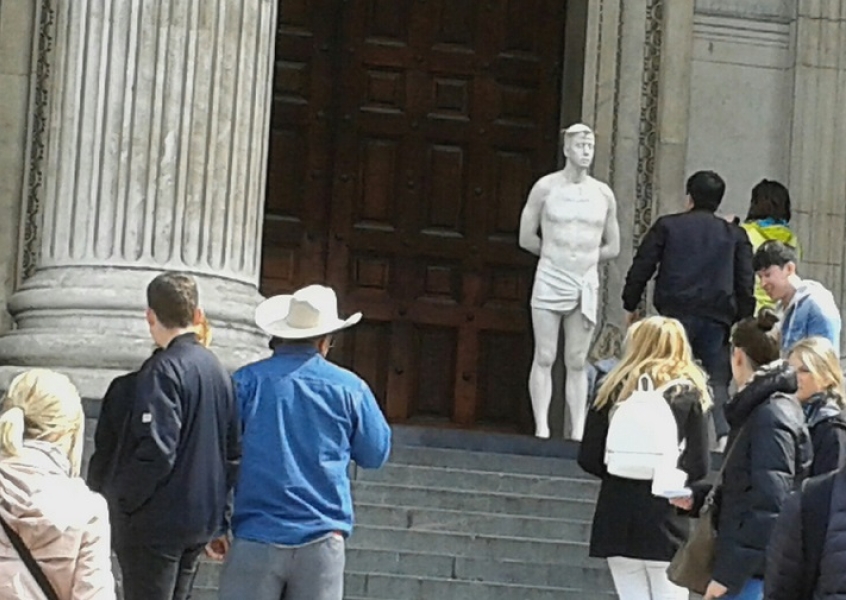
I'm not a big fan of statues but my favourite was the life-sized figure of Christ that stood in London's Trafalgar Square during the Millennium celebrations.
It stood on the square's previously-empty fourth plinth, going almost unnoticed among the surrounding grand statues and with Nelson's Column towering above it.
The statue, called Ecce H0m0 (Behold the Man), was built by conceptual artist Mark Wallinger and erected in 1999. He explained: "I consciously made him life-size. We are made in God's image, and he was made in our image.
"So for the statue to stand in contrast to the overgrown relics of empire was definitely part of the plan."
The figure was made of white marble resin, and depicted Christ standing before the multitude with his head slightly bowed.
I found the statue of Christ deeply moving and kept returning to Trafalgar Square to stand and gaze at it.
Because to me, the statue declared Christ's vulnerability. It stood as a reminder that the God of all creation came to earth as a man and lived among us. He gave up his life so that we might have salvation.
There, with London's traffic rushing by, pigeons coming in to land, and tourists snapping photographs of each other, Christ stood unobtrusively. Standing, you could say, at the door of our consciousness, and asking to be let in.
In a BBC interview at the time, the artist said that he wanted the statue to be an antidote to the "spiritually empty celebration" then taking place at the Millennium Dome in Greenwich. He hoped the figure would have a powerful effect on Christians and non-Christians alike.
It certainly had a deep effect on me. In April 2017, the statue of Christ was placed on the steps of St Paul's Cathedral during Easter. Again, I watched as tourists passed by not noticing the figure. It was a modern-day parable in marble resin.
When the Apostle Paul took a stroll around Athens, he spotted the various altars and statues to the Greek gods. He found an altar 'To an Unknown God' and declared that this was "the God who made the world and everything in it", who had made himself known in Jesus Christ.
Just as Mark Wallinger took possession of the fourth plinth in Trafalgar Square for Jesus Christ – the reason for the Millennium celebrations – so Paul claimed the 'unknown God' altar in Athens for the Christian gospel.
In a Christian Today article, Tim Farron MP said; "Quite frankly, most of us are not going to be remembered with a statue. Even someone who has reached the dizzy heights of Leader of the Liberal Democrats doesn't really expect to be memorialised for eternity in this way."
The Bible has always been wary of putting people on pedestals. It shows us all sides of the people it describes, warts and all.
It tells us that Moses was a murderer, that David was an adulterer, that Paul persecuted the first Christians and that Peter denied Christ. A modern-day public relations consultant would have suggested that those unfortunate 'details' might be edited out of the story.
But all of us have feet of clay, and few of us deserve to be memorialised for centuries in stone or marble. Rather, we are gently encouraged to love God and to love our neighbour as ourselves.
Maybe that's the best way to make our mark in history.
Peter Crumpler is a Church of England priest in St Albans, Herts, and a former Director of Communications for the CofE.













